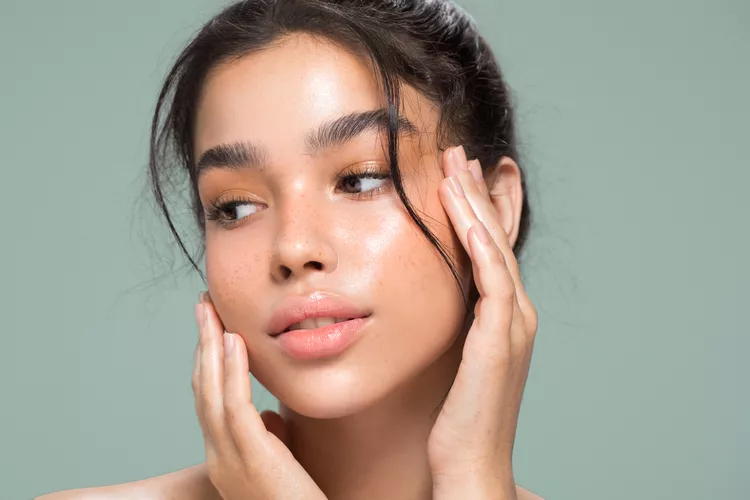The transformative impact of well-defined eyebrows on your facial appearance is truly remarkable. While the microblading trend has dominated the scene in recent years, have you explored the world of microshading? This relatively new brow tattoo technique achieves a more natural look by utilizing small dots instead of strokes.

Everything You Need to Know About Microshading Brows, the Stylish Alternative to Microblading
Here, we’ve consulted with two brow experts to unravel the nuances of microshading—clarifying what it entails, how it differs from microblading, what to anticipate during an appointment, the duration of the treatment, and more.
What is Microshading?
Microshading is a semi-permanent makeup method designed to enhance eyebrows, making them appear fuller, darker, and more defined. Nadia Afanaseva, founder of Eye Design New York, explains, “This technique offers clients either a natural or more dramatic look, depending on their request.” Often referred to as “powder brows” or “ombre brows,” microshading involves tattooing small dots, influencing the perceived color depth based on the density and proximity of these dots.
Microblading vs. Microshading
Afanaseva distinguishes between microblading and microshading, emphasizing that they are distinct procedures. “Microblading, or NANOblading, is a more realistic technique that mimics a natural hair pattern, providing a fuller, natural eyebrow look. In comparison, microshading results in shading that resembles makeup on the eyebrows.” Microblading achieves a super-natural appearance, while microshading offers a more makeup-heavy aesthetic. The application process also differs, with microblading resembling little paper cuts on the brows, while microshading involves creating a series of small dots.
Benefits of Microshading
The choice between microblading and microshading depends on your desired brow look. Microblading yields a more natural appearance, while microshading provides a powdered effect. Joey Healy, a brow expert, notes that individuals seeking a quick solution for waking up with filled brows or practical guidelines may opt for these treatments. Additionally, those who have lost brows due to reasons like chemotherapy may find microblading and microshading beneficial as a baseline for further enhancements.
What to Expect from a Microshading Appointment
A typical microshading appointment commences with a consultation, addressing client queries and discussing aspects such as eyebrow shape, color, and technique. The subsequent drawing process is crucial, ensuring a realistic look without relying on rulers or stencils for shaping. The third step involves numbing the eyebrows before the procedure, which generally lasts one to one and a half hours. The entire appointment, including consultation, drawing, numbing, and the procedure, spans two to two and a half hours. Before the appointment, it’s advised to avoid sunburn, injectables, alcohol, and blood-thinning substances.
How Long Does Microshading Last?
Immediately post-treatment, eyebrows may appear darker and thicker than the final result, causing initial concerns for some clients. However, the healing process takes up to two weeks, resulting in a final look that lasts from one to three years. Factors influencing longevity include skin type, pigment used, and aftercare practices. Sunscreen application is recommended for prolonged eyebrow effects.
Cost of Microshading
Microshading costs vary based on location, with prices typically ranging from $500 to $800 at Eye Design New York. Experienced professionals may charge between $1000 and $2000. Similar to tattoo pricing, microshading requires specialized skills, time, and technique, justifying the higher cost compared to regular brow maintenance appointments.
Side Effects of Microshading
Joey Healy expresses reservations about microshading and microblading due to potential skin issues such as scar tissue, infection, and damage to existing brows. He suggests a growing inclination toward serums and softer color cosmetics as alternatives. Color changes over time may lead to red or blue tones, and people often find the trend fading, with the realization that these procedures, although labeled as semi-permanent, can have lasting effects.
Nadia Afanaseva counters these concerns, emphasizing that side effects are usually associated with poor-quality service. Quality products, tools, and strict hygiene practices during the procedure minimize the risk of allergic reactions or infections.
Maintenance of Microshading
Microshading requires yearly touch-ups to sustain the desired brow appearance. Regular sunscreen use and sun avoidance are recommended to protect the longevity of the brows.
In summary, microshading emerges as a versatile and effective technique for achieving impeccably defined and naturally enhanced eyebrows, with considerations for individual preferences, skin type, and meticulous aftercare.
